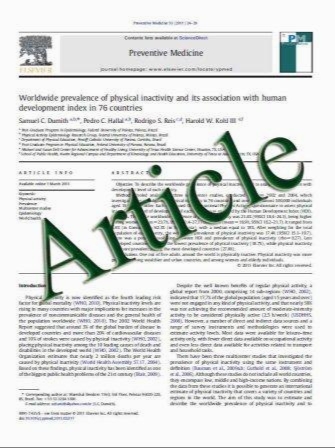A porcine model of ischemic heart failure produced by intracoronary injection of ethyl alcohol
- نوع فایل : کتاب
- زبان : انگلیسی
- مؤلف : Weon Kim Myung Ho Jeong Doo Sun Sim Young Joon Hong Ho Cheon Song Jong Tae Park Young Keun Ahn
- چاپ و سال / کشور: 2010
Description
We have developed a porcine model of acute myocardial infarction (AMI) and ischemic heart failure by transcatheter intracoronary injection of ethyl alcohol and observed pathologic changes induced in the alcohol-injured coronary artery and infarcted myocardium. In a total of 12 female pigs, anteroseptal AMI was induced by transcatheter delivery of 1 mL of 99.9% ethyl alcohol using a 2.5 mm diameter over-the-wire balloon catheter in the left anterior descending artery (LAD). Another five pigs underwent the sham operation, and the differences in left ventricular (LV) dimension and LV ejection fraction between these pigs and those injected with ethyl alcohol were evaluated. Follow-up coronary and LV angiography, echocardiography and histopathology were performed at 4 weeks after the procedure. Myocardial SPECT using 201Tl (and 99mTc-MIBI) and triphenyl tetrazolium chloride (TTC) stain were performed and compared. Procedure-related death occurred in two pigs with proximal LAD occlusion. Four pigs suffered from ventricular tachycardia, which converted to sinus rhythm by DC cardioversion. Follow-up coronary angiography at 4 weeks revealed persistent total occlusion in all pigs. Echocardiogram showed decreased apicoanteroseptal wall motion with an ejection fraction of 46.5 ± 3.3% and nonsignificantly changed LV dimensions. Myocardial SPECT revealed a perfusion defect in the apicoanterior wall in all subjects (percent area of the perfusion defect = 22.1 ± 2.50%). The percentage of myocardium not stained by TTC was 23.1 ± 2.25%. Histologic examination revealed severe fibrosis in the infarcted myocardium and massive thrombus with organization and calcification in the alcohol-injured coronary artery. The porcine model of AMI obtained by intracoronary alcohol injection provides a safe and reproducible method for the research and development of new therapeutic modalities for MI and end-stage heart failure.
Heart Vessels (2011) 26:342–348 DOI 10.1007/s00380-010-0022-3 Received: 16 March 2009 / Accepted: 21 January 2010 / Published online: 21 October 2010


